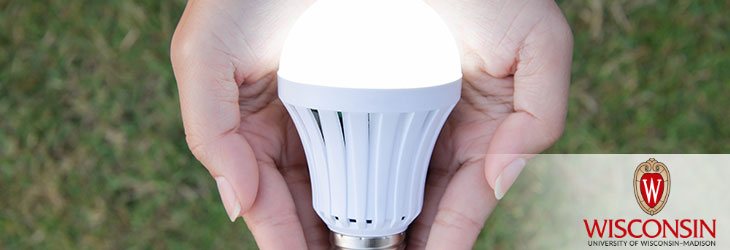Clean Technology

Use of Liquid Crystals and Affinity Microcontact Printing to Detect Chemicals and Biomolecules
WARF: P03422US
Inventors: Nicholas Abbott, Matthew Lee Tingey, Brian Clare, Chang-Hyun Jang
The Wisconsin Alumni Research Foundation (WARF) is seeking commercial partners interested in developing methods for using affinity microcontact printing and liquid crystals to simply and easily detect a ligand or receptor.
Overview
Many conventional methods, such as radioimmunoassay (RIA), enzyme-linked immunosorbent assay (ELISA) or surface plasmon reflectometry (SPR), can detect the presence of target molecules; however, these techniques are expensive and often require complex equipment and highly trained individuals, making them difficult to use routinely in the field.
The Invention
UW-Madison researchers have developed methods for using affinity microcontact printing and liquid crystals to simply and easily detect a ligand or receptor. Affinity microcontact printing captures a specific ligand from a sample and “stamps” the ligand onto a detection surface so that the ligand’s presence can be visualized with liquid crystals.
First, an “affinity stamp” is created by covalently linking a capture protein, which binds the target ligand, to a polydimethylsiloxane (PDMS) base. The stamp is then placed into contact with a sample, and if the target ligand is present in the sample, the stamp will bind it. Next, the stamp is contacted with a detection substrate to transfer the target ligand, if present, from the stamp to the substrate. Liquid crystals are added to the top of the detection substrate, and a functionalized glass slide is placed on top of them. The ligand is present in the sample if the liquid crystal display appears disordered or disrupted.
First, an “affinity stamp” is created by covalently linking a capture protein, which binds the target ligand, to a polydimethylsiloxane (PDMS) base. The stamp is then placed into contact with a sample, and if the target ligand is present in the sample, the stamp will bind it. Next, the stamp is contacted with a detection substrate to transfer the target ligand, if present, from the stamp to the substrate. Liquid crystals are added to the top of the detection substrate, and a functionalized glass slide is placed on top of them. The ligand is present in the sample if the liquid crystal display appears disordered or disrupted.
Applications
- Detecting many types of ligands or receptors including peptides and proteins; carbohydrates; metals, including heavy metals; chelators; pathogenic viruses and bacteria; mammalian cells; nucleic acids; antibodies; organic molecules; lipids; drugs; chemical agents; and pesticides or herbicides
Key Benefits
- Simpler than conventional systems
- May allow analysis of samples in remote locations
- Uses separate surfaces for capturing and detecting the ligand, allowing use of different materials for each surface, as well as independent optimization of each surface for enhanced sensitivity and selectivity
- Affinity stamps and detection substrates can be reused.
- Reduces costs of detecting pathogens